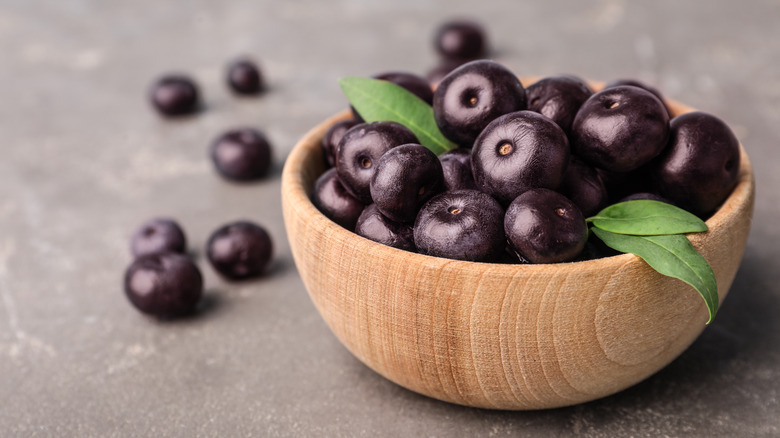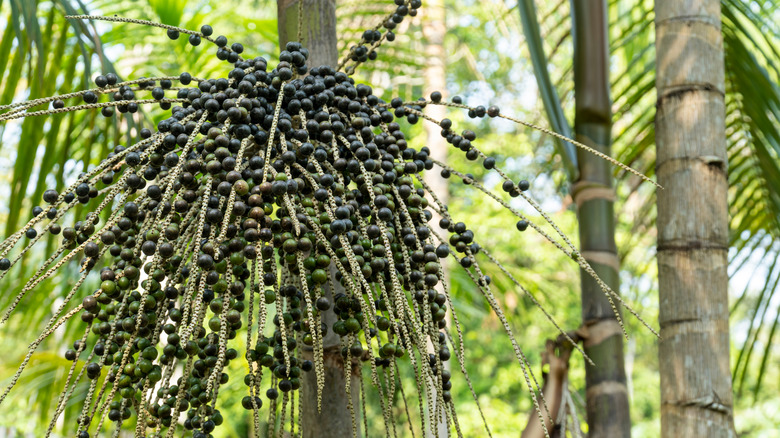Most Of The World's Açaí Comes From This Country
Maybe you've seen açaí at the smoothie shop or have come across packages in the frozen foods section, but what exactly is this purple food and where does it come from? Known for health-boosting antioxidants (up to 30 times more than red wine!) the tasty açaí berry is thought to boost the immune system, fight aging, and deliver a reliable jolt of energy when consumed (via BBC).
Açaí trees grow nearly 100 feet high and require someone to climb to the top to pick the berries — berries that can take up to 10 years to grow, according to the Nature Conservancy. Açaí berries grow in thick clusters, and a tree will produce around 45 pounds of fruit each year (per Sambazon). But as versatile as açaí is — it can be found in pulp, powder, capsules, creams, and perfumes — the majority of this profitable superfood comes from one location, reports Diálogo Chino.
A super fruit from the Amazon
Açaí berries grow throughout the fertile Amazon River basin, a hot, muggy environment that stretches across the tropical regions of upper South America, yet most of the harvested berries are found in the Brazilian state of Pará (via Sambazon). Statista reports that in 2019, this region was responsible for nearly 95% of Brazil's açai. As BBC points out, we're talking enough to fill 500 Olympic-sized swimming pools.
Not to mention, açaí can be 20 times more profitable than the soy and meat industries, according to Diálogo Chino, yet Brazil only exports less than 1% of their harvested supply, hardly benefitting the region and the locals who gather the fruit. "Of the US $15 billion that the açaí market moves worldwide, only $1 billion returns to the Amazon," climate engineer Carlos Nobre observed (per Diálogo Chino). It's clear this is an area that holds potential, and we're eager to see how the industry develops. In the meantime, we'll keep blending smoothies for good health.

